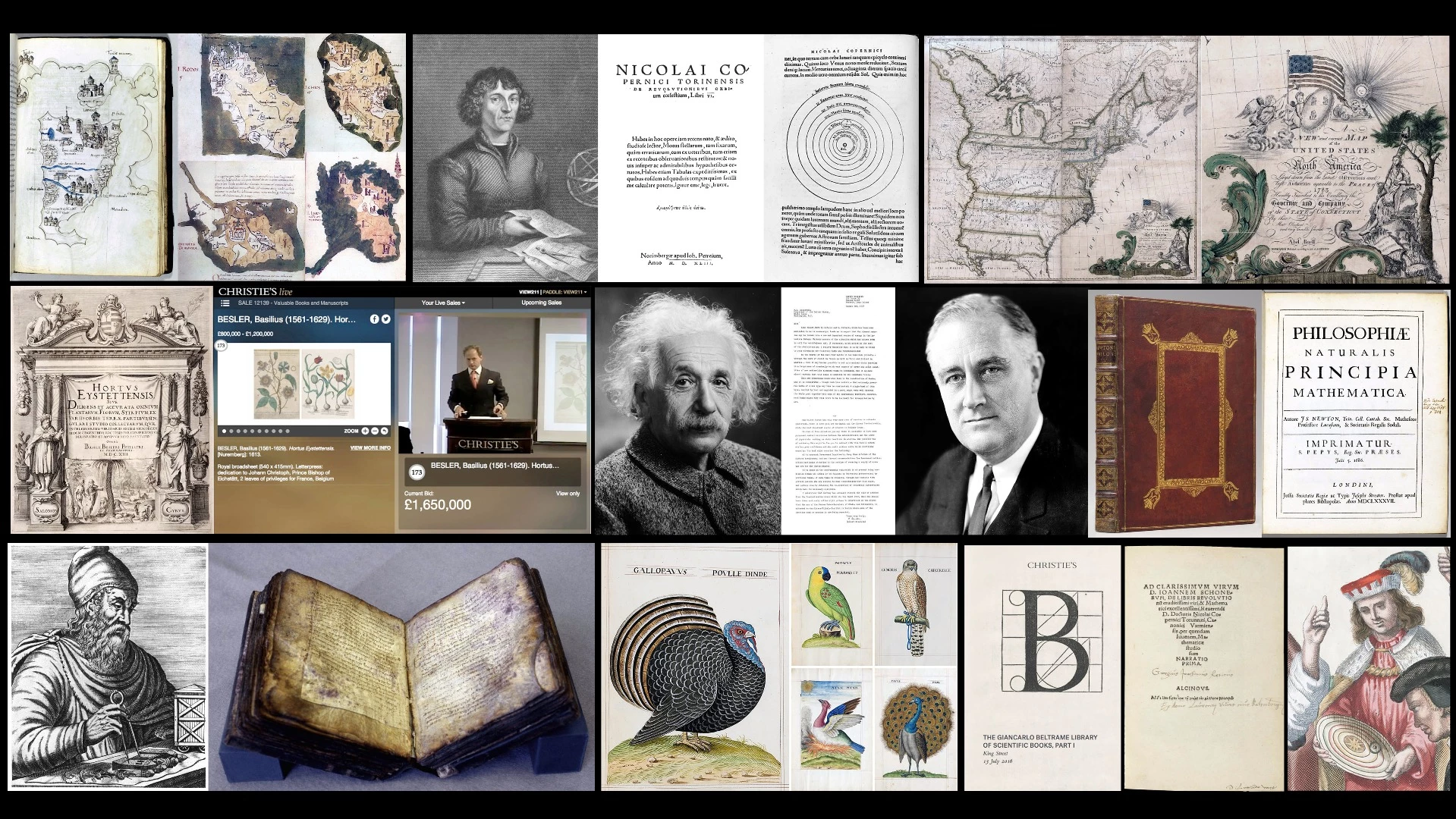UPDATED January 13, 2018 The second last installment in our top 50 scientific documents series moves past the two million dollar mark and into heavyweight territory with Philosophiae Naturalis Principia Mathematica by Sir Isaac Newton, De revolutionibus orbium coelestium by Nicolaus Copernicus, the Archimedes Palimpsest, and the letter from Albert Einstein to United States President Franklin D Roosevelt that catalyzed nuclear warfare.
This is the fifth (numbers 20-11 of the top 50) of a six part series covering the most valuable scientific documents and manuscripts. The introduction to the marketplace is the first part of the series, the second (numbers 50-41), third (numbers 40-31) and fourth (numbers 30-21) parts are already published, and numbers #10-1 will follow tomorrow.
20 - Liber Insularum Archipelagi by Cristoforo Buondelmonti
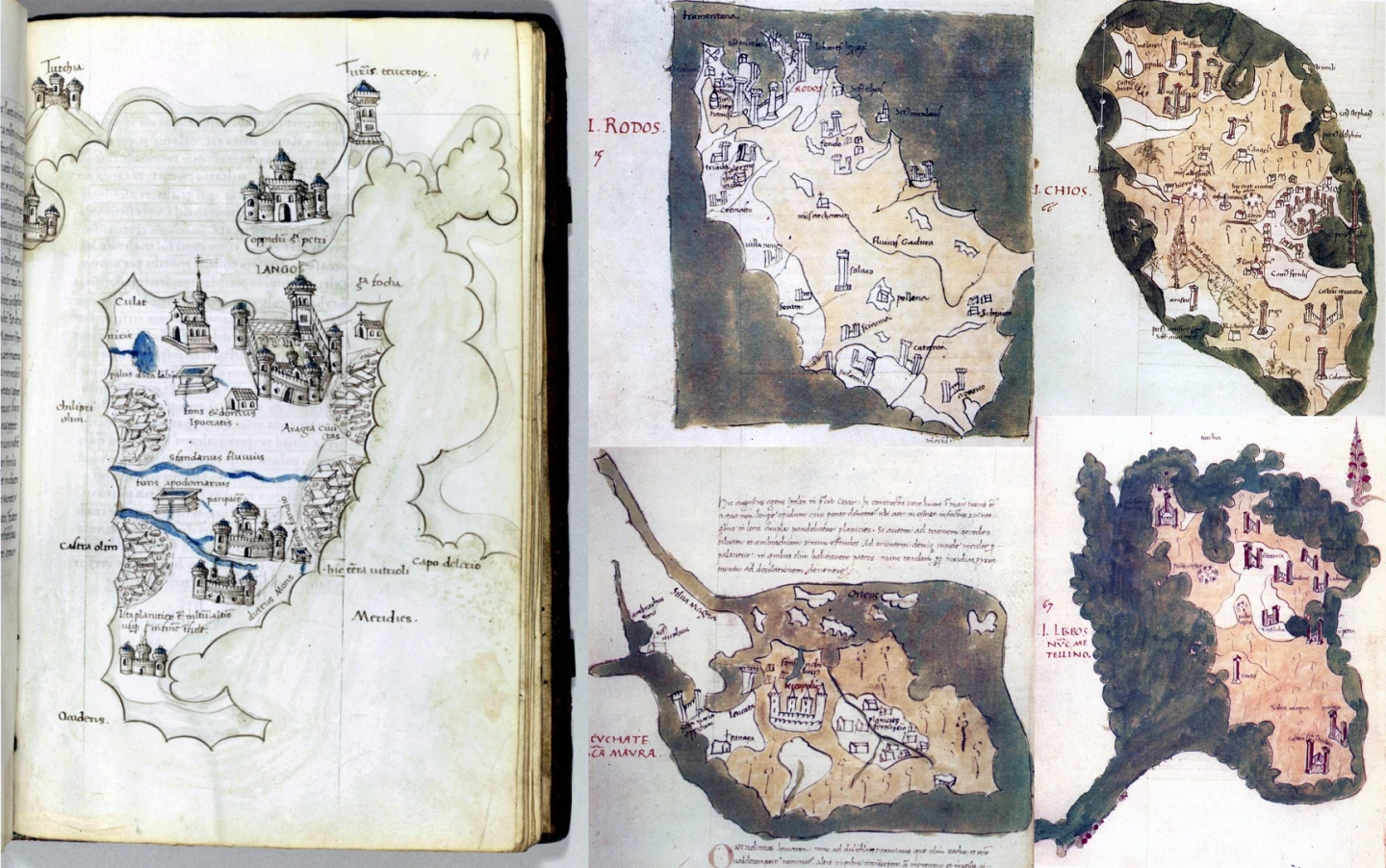
Price: $1,762,500
Created: 1420
Auctioned: Christie's (New York), April, 2012
Significance: Liber Insularum Archipelagi was cited in the auction description as "the most important Renaissance illustrated travel book of the Eastern Mediterranean, treating in considerable detail the geography and history of the Greek Archipelago."
The book was created by Italian monk Cristoforo Buondelmonti (1386 - c. 1430), a member of the distinguished Florentine family, whose studies of Greek antiquity and literature saw him travel widely.
Buondelmonti left his native city of Florence around 1414 in order to travel, mainly in the Aegean Islands. He visited Constantinople (Istanbul) in the 1420s. He is the author of two historical-geographic works: the Descriptio insulae Cretae (1417, in collaboration with Niccolò Niccoli) and the Liber insularum Archipelagi (1420). These two books are a combination of geographical information and contemporary charts and sailing directions. The latter includes the only known map of Constantinople (above right) to predate the Ottoman conquest of the city in 1453.
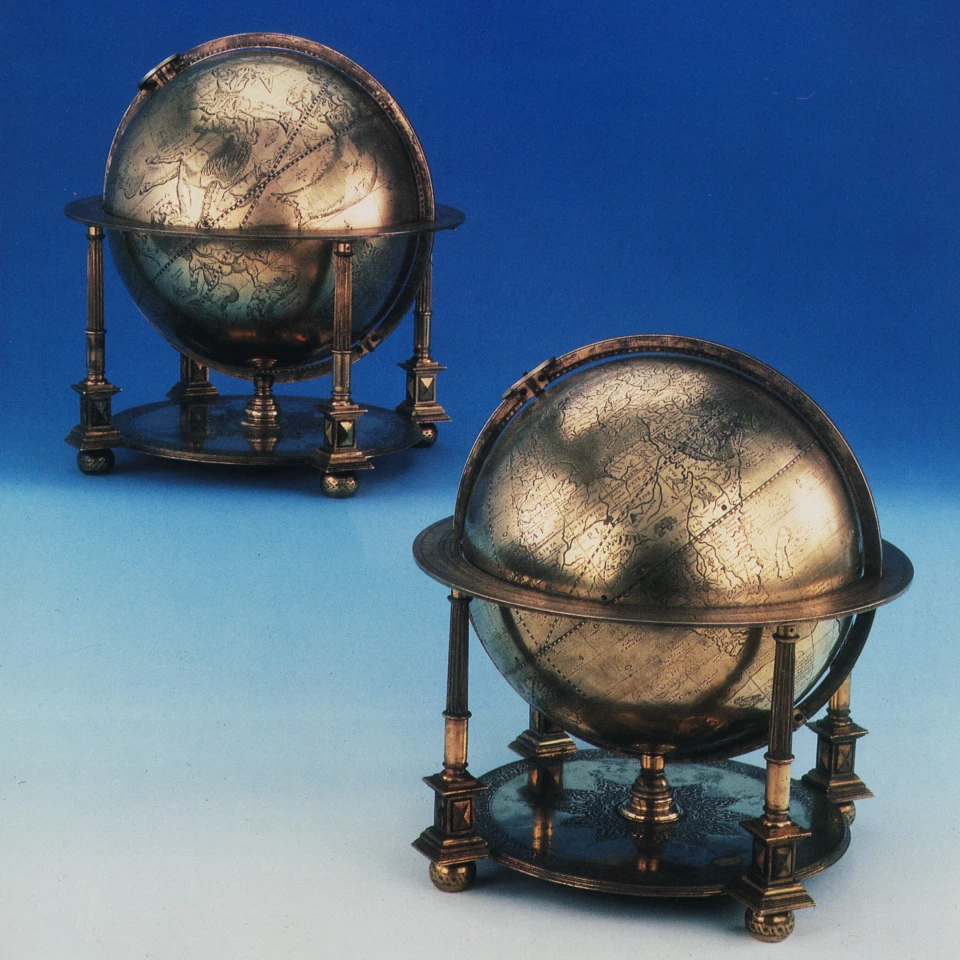
Some perspective on the price: The most expensive globes to have ever sold at auction are the above pair of gilt-metal globes (one terrestrial and one celestial) once owned by Sultan Murad III (1546 – 1595), Emperor of the Ottoman Empire from 1574 until his death in 1595. The globes are 29.6 cm in diameter and are believed to from the workshop of Gerardus Mercator (see also #42 in this listing). The globes were sold $1,778,486 (£1,023,000) on an estimate of £400,000 - £600,000 at a Christie's (London) auction in October, 1991.
19 - Album of original watercolors by Pierre Gourdelle
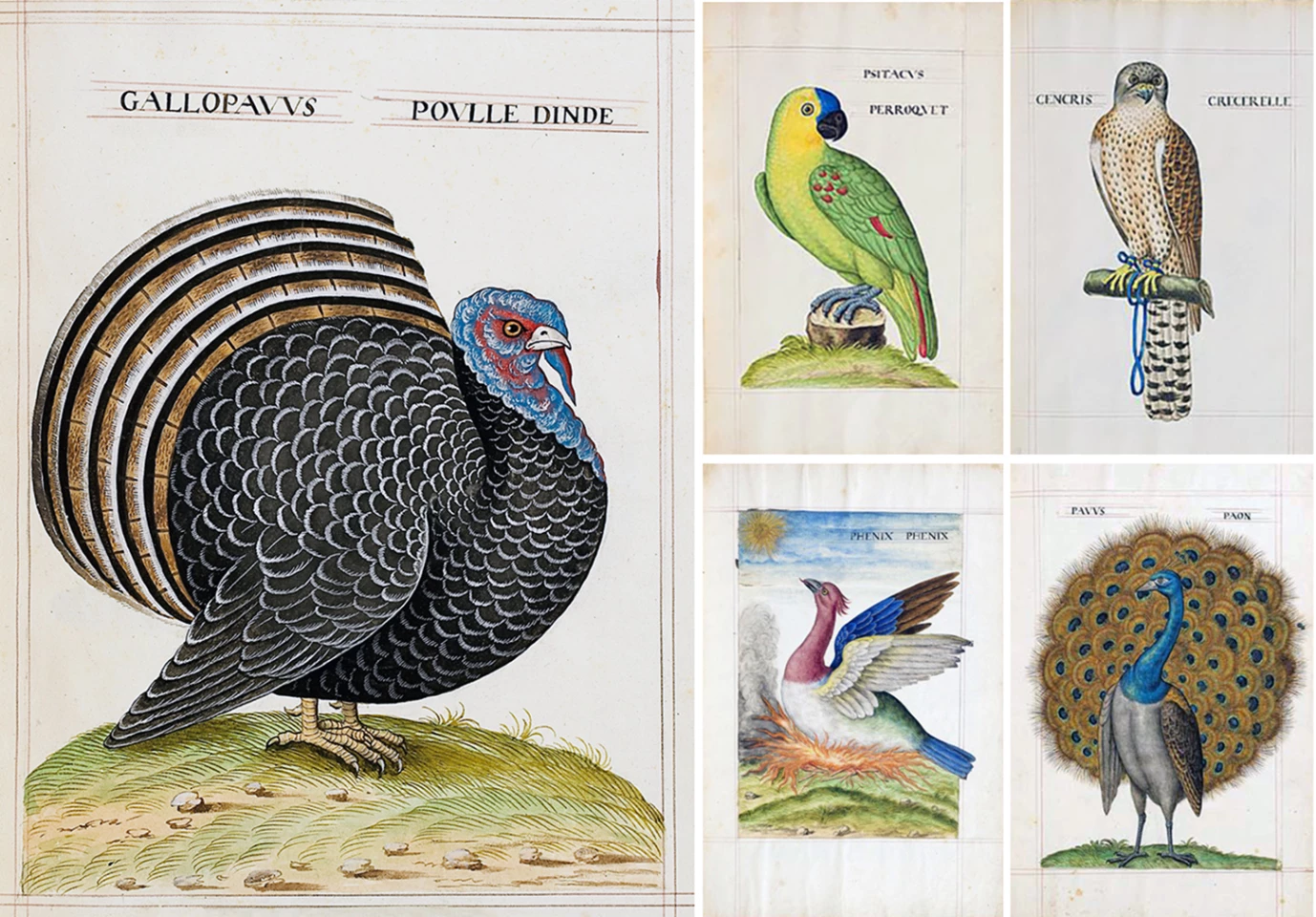
Price: $1,787,264 (EUR €1,422,243)
Estimate: Not Available
Created: 1550-1560
Auctioned: Pierre Bergé & Associés (Paris), June, 2006 (no auction link)
Significance: This is an album of 50 original watercolors from the early career of 16th century French master, Pierre Gourdelle. Gourdelle worked for many rich patrons including Catherine de Medici and the Houses of Guise and Clèves. The flyleaf of this bound and gilt-painted masterpiece of the Renaissance bears the arms of Richoufftz, a family associated with the Gueldre and Clèves families. The Bibliothèque nationale de France has an almost identical collection by the same artist. These illustrations were most likely used for the engravings in the book by Pierre Belon published in 1555, L'Histoire de la nature et des oiseaux.

Some perspective on the price: The red leather jacket worn by Michael Jackson in "Thriller", the biggest selling music video in history, fetched $1,810,000 at a Julien's auction in 2011.
18 - The two-page letter from Albert Einstein to United States President Franklin D Roosevelt that catalyzed nuclear warfare
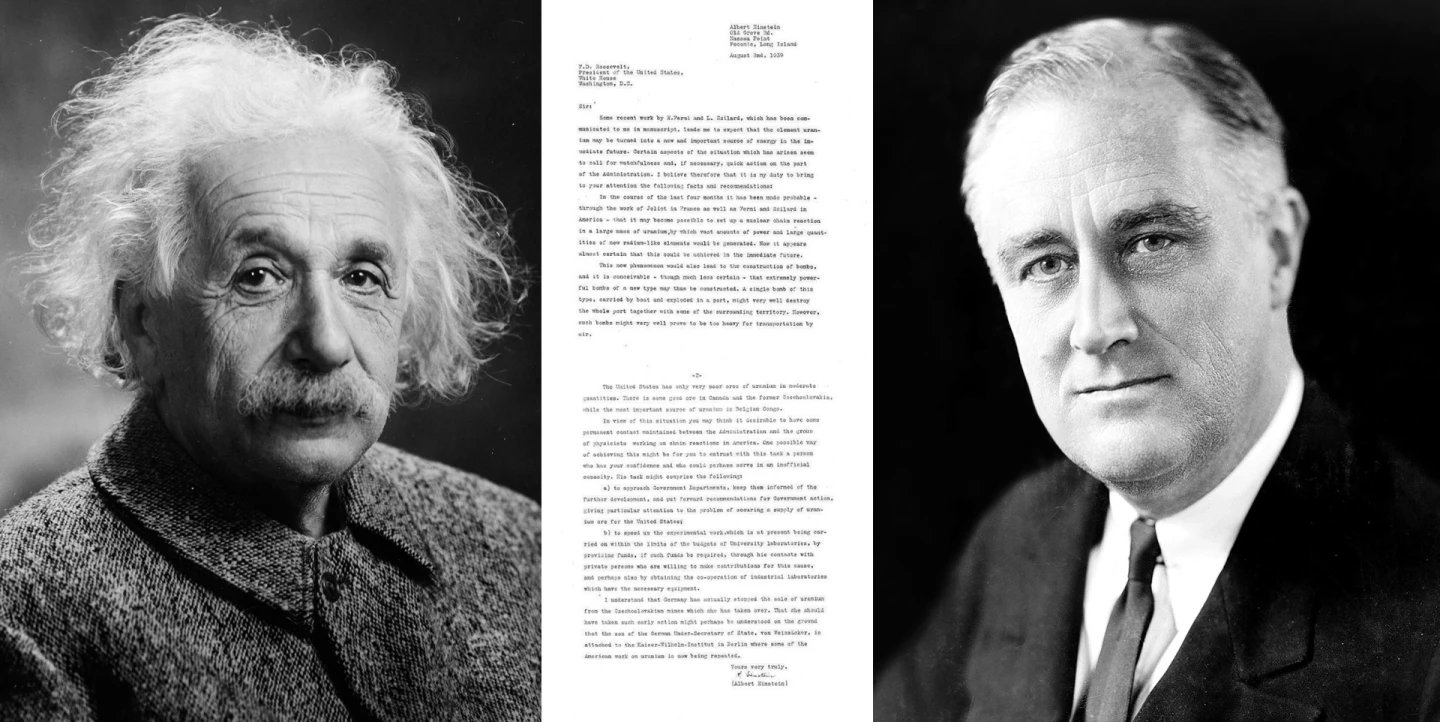
Price: $2,096,000
Estimate: $800,000 - $1,200,000
Created: 2 August, 1939
Auctioned: Christie's (New York), March, 2002
Significance: Arguably the single most influential letter penned during the 20th century, this two page letter changed the course of history.
In 1939, a group of physicists, several of whom had fled Hitler's Germany, met to discuss concerns regarding Germany's development of a uranium-based weapon system. It was decided to inform President Roosevelt of their concerns and as previous attempts to inform the U.S. administration had fallen on deaf ears, Albert Einstein (who had a personal relationship with the Roosevelts) was enrolled and a letter informing the President about the dangers of a nuclear chain reaction bomb was drafted for Einstein's signature.
From the auction description: The impulse which led to the letter originated not with Einstein but with the Hungarian-born physicist Leo Szilard, a former student of Einstein's, who, like Fermi, Teller, Einstein and a host of other European scientists and researchers, had been driven from his homeland to the United States by the threat of Hitler's European aggression and persecution. In fact, the collaboration of Einstein and Szilard, motivated by their fears of German war preparations and nuclear research, generated not one, but two nearly identical letters: both composed at the same time, both typed on the same typewriter and finally, both signed with the same pen by Einstein. One ... was delivered to the President. ... The other, alternate version of that historic communication, retained by Szilard, is offered here, together with Einstein's handwritten letter transmitting both letters to Szilard.
Walter Isaacson is known for many things (Chairman and Editor of CNN, Editor of Time magazine, and more recently, his authorized biography of Steve Jobs), but in his 2007 definitive biography of Albert Einstein, Einstein: His Life and Universe, he captured the very moment when Einstein became aware of the potential of nuclear weapons: "Sitting at a bare wooden table on the screen porch of the sparsely furnished cottage, Szilard explained the process of how an explosive chain reaction could be produced in uranium layered with graphite by the neutrons released from nuclear fission. 'I never thought of that!' Einstein interjected. He asked a few questions, went over the process for fifteen minutes, and then quickly grasped the implications."
Written on August 2, 1939 and delivered by Alexander Sachs to the President on 11 October, 1939. After learning the letter's contents, President Roosevelt told his military adviser General Edwin M. Watson, "This requires action."
That action became the Manhattan Project, and resulted in the use of nuclear weapons on the Japanese towns of Hiroshima (6 August, 1945) and Nagasaki (9 August, 1945).

One version of this letter (several sentences longer), is held in the Franklin D. Roosevelt Library in New York. The Christie's auction sale was of the shorter letter, while the image above is of the longer letter from the FDR Library, via Vision Learning. An excellent account of the circumstances of the letter and its consequences appeared in the New York Times in August, 1964 by Ralph E. Lapp, entitled, "The Einstein Letter that Started It All." There's an equally fascinating report in The Atlantic of Einstein's subsequent regrets in sending the letter, which reports Einstein as having said: "Had I known that the Germans would not succeed in producing an atomic bomb, I would have never lifted a finger."
A copy of this letter that was prepared by Einstein during the filming of the Oscar-nominated 1946 documentary film, Atomic Power was sold by Alexander Auctions for $286,800 in December, 2011.
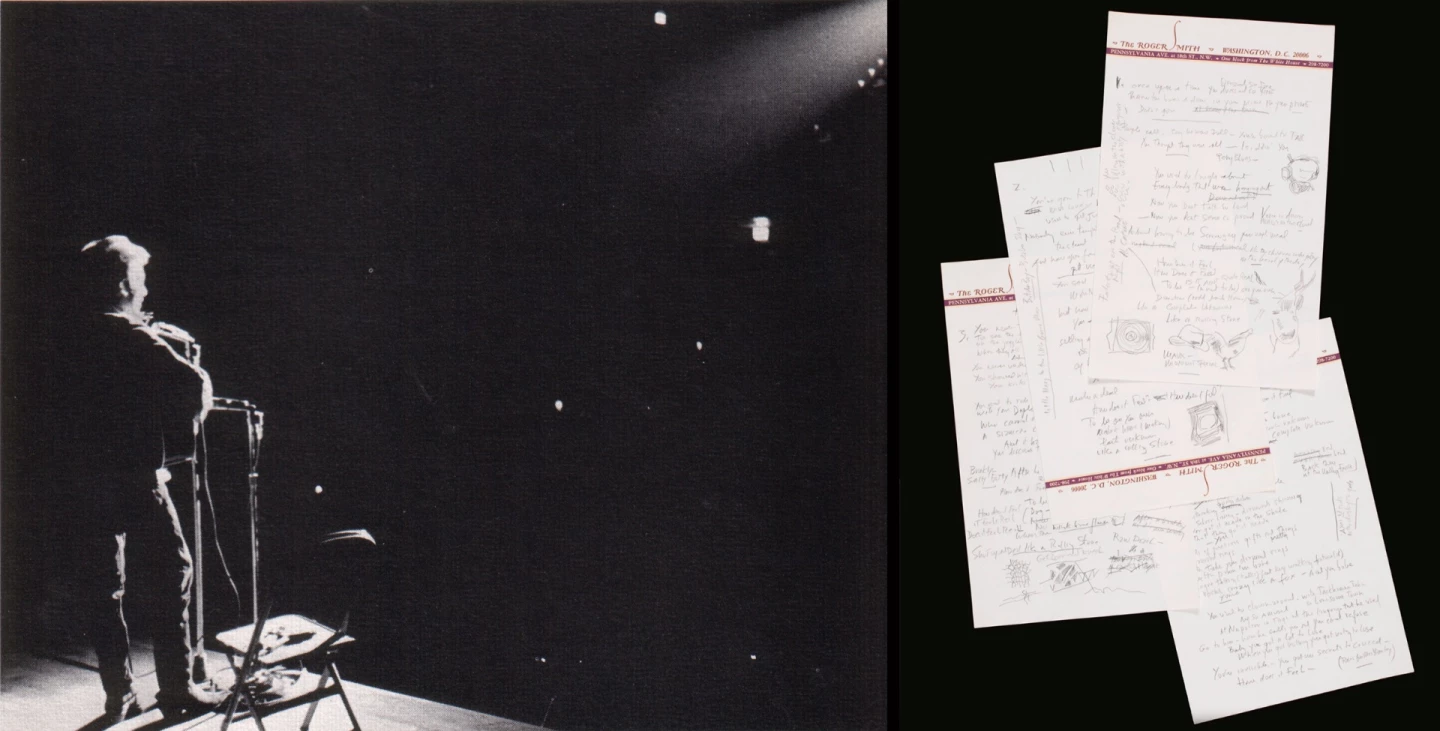
Some perspective on the price: Significance, much like beauty, is in the eye of the beholder, with Bob Dylan's original handwritten lyrics to "Like A Rolling Stone" (above) selling for $2,045,000 at a New York Sotheby's auction in 2014, the autograph manuscript of Sergei Rachmaninov's second symphony selling for $2,025,422 (£1,202,500) at a London Sotheby's auction in 2014 and a Houston Oilers Football Helmet signed by the team's Stetson-wearing coach, Bum Phillips sold for $2.0 million in 2011.
17 - Map of the United States of America by Abel Buell
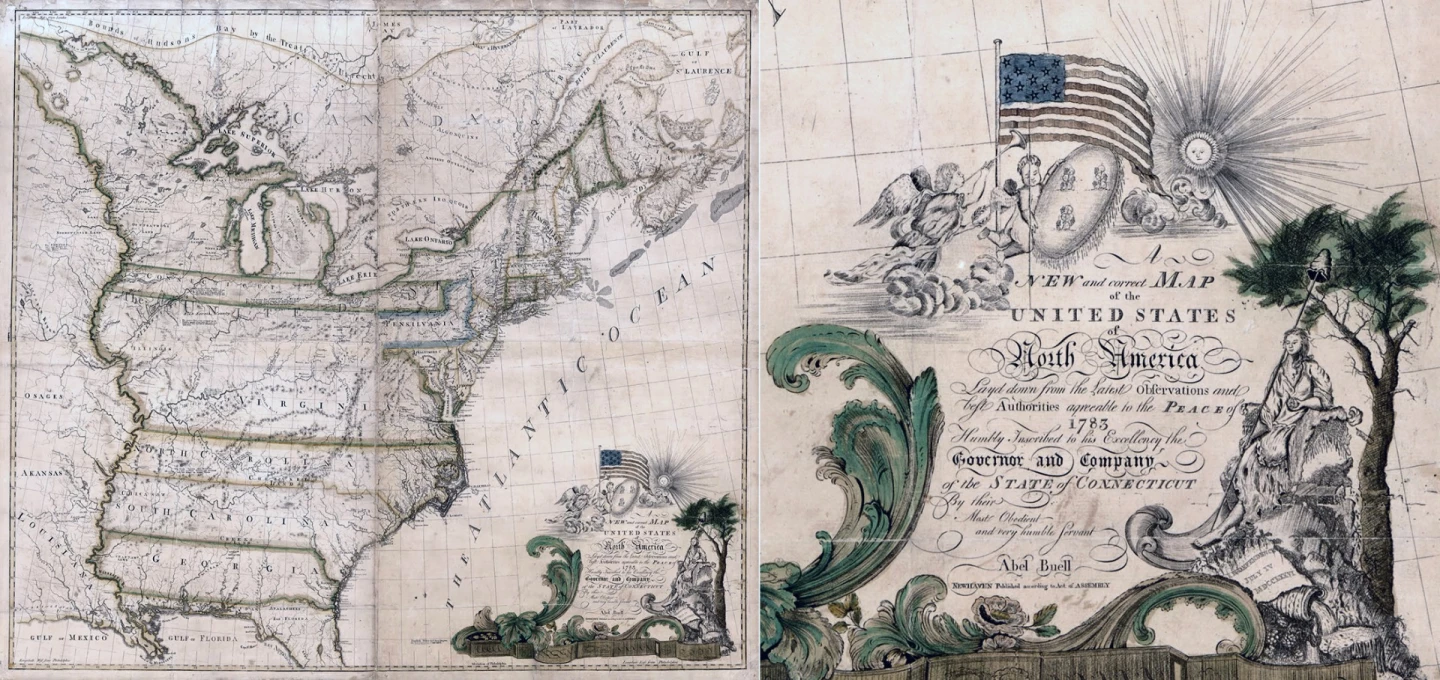
Price: $2,098,500
Estimate: $500,000 - $700,000
Created: Published March 1784, just six months after the Treaty of Paris which ended the American Revolutionary War
Auctioned: Christie's (New York), December, 2010
Significance: This is the first map of the United States printed in America by an American and one of just seven extant copies. It depicts the boundaries of the new American nation and shows the "Stars and Stripes" for the first time.
The work of the remarkable inventor, goldsmith, silversmith, jewelry designer, engraver, surveyor, printer, type manufacturer (he was the first person to design and cast type in the United States), mint master, textile miller and convicted counterfeiter, Abel Buell (1742–1822), it contains no original cartographic material but was nonetheless the first map to be copyrighted in the United States.
This particular auctioned copy of this map was gifted to the Library of Congress following its purchase at auction. Despite an irrepressible spirit and a life of achievement (not to mention achieving most of this with a "C" branded in the center of his forehead for his counterfeit conviction at age 21), Buell died penniless in 1822.
16 - The Archimedes Palimpsest
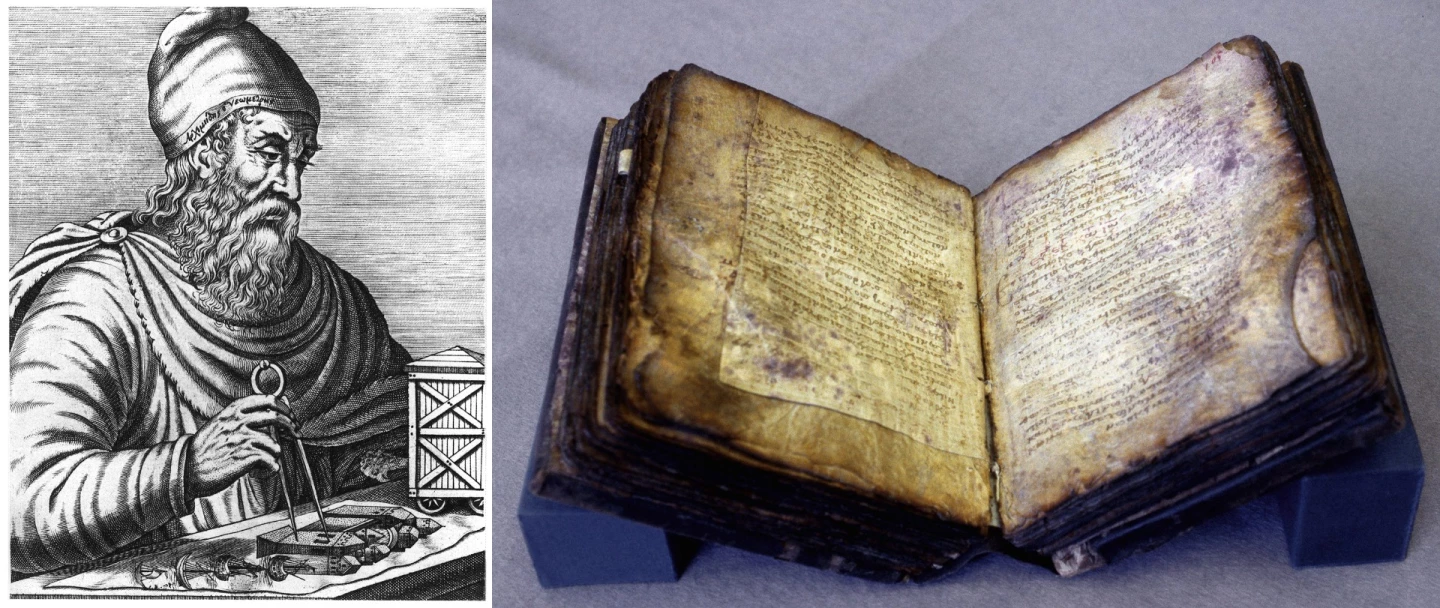
Price: $2,202,500
Estimate: $800,000 - $1,200,000
Created: It's complex! A "palimpsest" is a manuscript page, from which the text has been scraped or washed off so that the pages can be reused – vellum was extremely expensive and it was a common practice to overwrite manuscripts considered no longer useful. The "Archimedes Palimpsest" was sold at auction in 1998 as a medieval Byzantine prayerbook, written in Greek, probably in Jerusalem, in April, 1229. It's the original 174 parchment folios which were overwritten to create the prayerbook that are the treasure, as they include no less than seven treatises by Archimedes (c. 287 BC – c. 212 BC). The overwritten manuscripts in this case, are believed to have been copied by a scribe working in Constantinople circa 950 AD from the original Archimedes treatises.
Once complete (with Archimedes' scripts barely visible underneath the new writing), the prayerbook was used in religious study for the next 700 years, initially within the Mar Saba monastery in Constantinople, and it was discovered in 1906 by Danish philologist Johan Heiberg in the library of The Church of the Holy Sepulchre in Istanbul (aka Constantinople aka Byzantium). Heiberg realized the underlying text was that of Archimedes, and photographed every page, transcribing the obscured layer as best he could using a magnifying glass, subsequently publishing his transcription. In 1907, the palimpsest went missing and during the missing years, a forger painted copies of medieval evangelical portraits in gold leaf onto four pages in the book. In 1930, the palimpsest was purchased by an amateur French collector of antiques from a dealer in Instanbul, spending its next seven decades in his family's Paris home with no-one aware of what it really contained.
In 1991, the family approached Christie's Paris for an appraisal of the prayer book, where it was recognized as the lost Archimedes palimpsest pictured in Heiberg's photographs. Christies valued it at between $800,000 and $1.2 million.
Auctioned: Christie's (New York), October, 1998
Significance: The inventiveness and original thought of Leonardo da Vinci and Isaac Newton is well preserved, but there have been several finds in recent years that suggest mankind knew a lot more 2000 years ago than we originally thought.
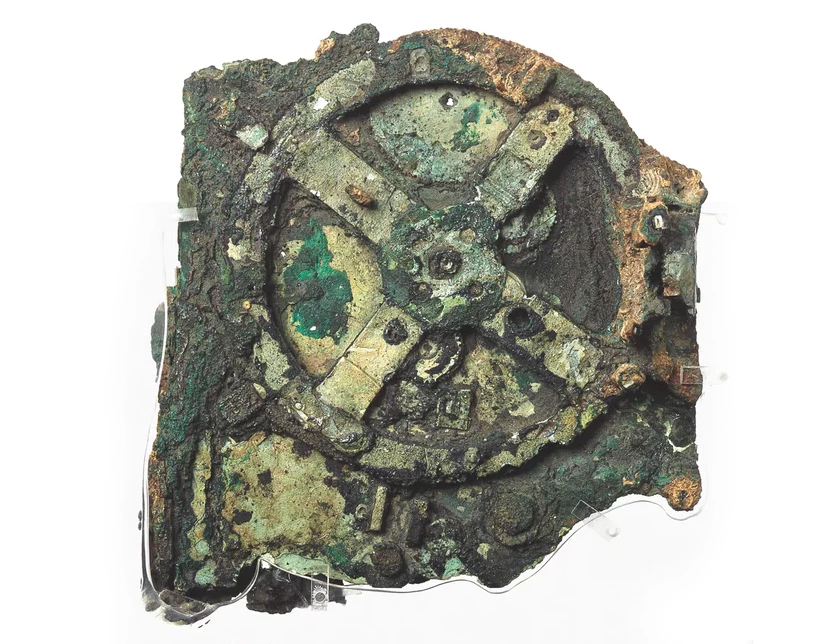
The first was the Antikythera Mechanism, and the second is the Archimedes Palimpsest, the second from the mind of the greatest mathematician and engineer in antiquity and the first most likely from the same school.
Following this auction, the anonymous purchaser enabled American scientists to use a range of technologies designed to looked underneath the upper layers of this (on the surface) Byzantine liturgical manuscript, to find seven treatises by Archimedes: The Equilibrium of Planes, Spiral Lines, The Measurement of the Circle, Sphere and Cylinder, On Floating Bodies, The Method of Mechanical Theorems, and The Stomachion. The first four were already known through other surviving manuscripts, but this copy of On Floating Bodies is written in Greek (the language in which Archimedes wrote), and is hence free of any translation misunderstandings from the original. The copies of The Method of Mechanical Theorems and The Stomachion are the only known copies and contribute greatly to our understanding of Archimedes and his genius.
Some perspective on the price: It seems remarkably coincidental that two of our greatest insights into the long lost body of scientific knowledge of more than 2000 years ago should come from the same man. Many people regard the Antikythera Mechanism as the world's most valuable object, and yet, at auction, this long lost manuscript from one of history's greatest minds, fetched a similar price to General Custer's Culbertson Guidon (cavalry flag) from the Battle of Little Bighorn sold in December, 2010 for $2,210,500.
15 - De revolutionibus orbium coelestium by Nicolaus Copernicus
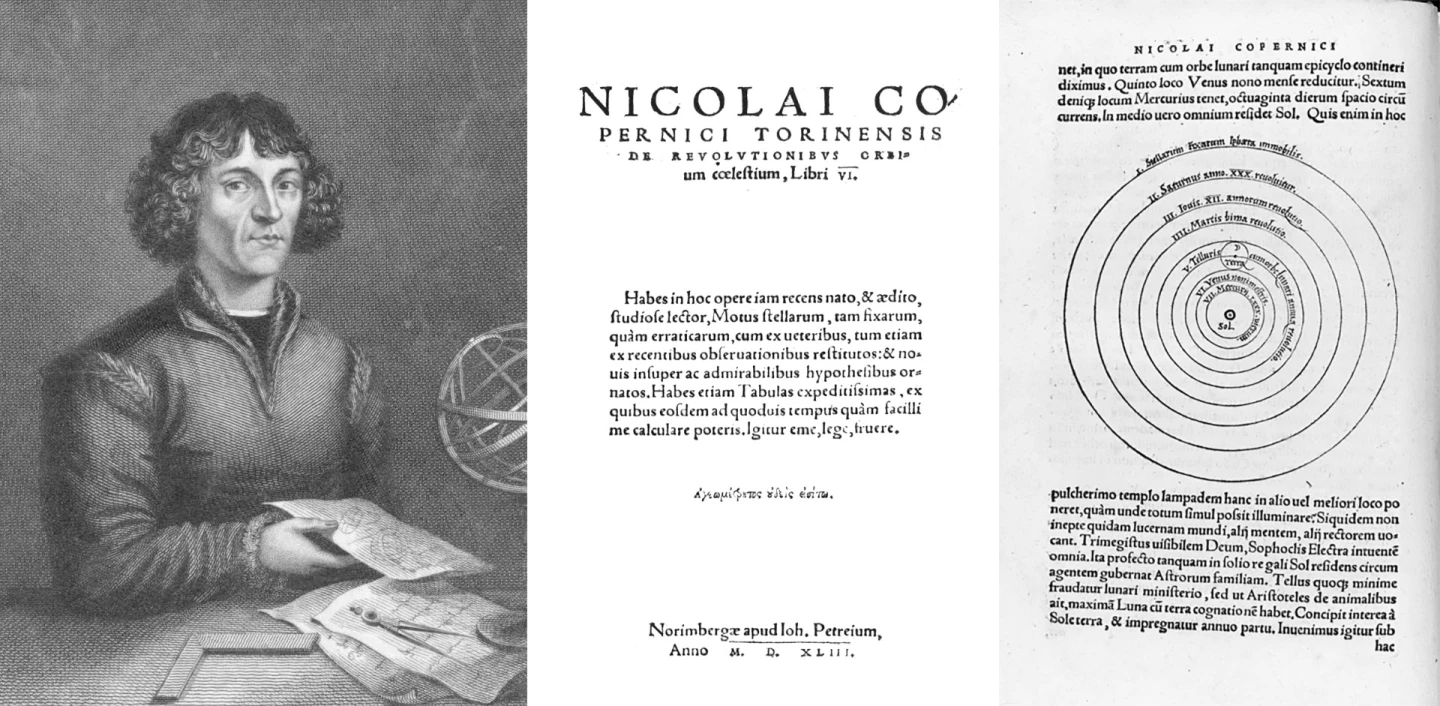
Price: $2,210,500
Estimate: $900,000 - $1,200,000
Created: 1543
Auctioned: Christie's (New York), June, 2008
Significance: It may seem hard to believe that not that long ago, humanity's understanding of the universe was so myopic that we thought our planet was the center of it all. De revolutionibus orbium coelestium (On the revolutions of the heavenly spheres), by Nicolaus Copernicus was published less than 500 years ago, and presented compelling evidence that the Earth was not the center of the universe with the heliocentric theory.
This book was finally published in 1543, though its core was written at least three decades prior, and Copernicus resisted publication, finally handed one of the first printed copies on his death bed. He was thus spared the fury of the Catholic Church which regarded his heliocentric views as heresy. A century later, Galileo Galilei experienced persecution for promoting the same ideas, spending the last 25 years of his life under house arrest. In his lifetime Copernicus would never grasp the importance of his work, or that the book he resisted publishing would be forever recognized as a landmark event in the history of science.
More than just contradicting religious doctrine, this book threatened mankind's self perception. As Sigmund Freud so eloquently put it in his A General Introduction to Psychoanalysis (delivered as lectures between 1915 and 1917 and translated into English in 1920): Humanity has in the course of time had to endure from the hands of science two great outrages upon its naive self-love. The first was when it realized that our earth was not the center of the universe, but only a tiny speck in a world-system of a magnitude hardly conceivable; this is associated in our minds with the name of Copernicus, although Alexandrian doctrines taught something very similar. The second was when biological research robbed man of his peculiar privilege of having been specially created, and relegated him to a descent from the animal world, implying an ineradicable animal nature in him: this transvaluation has been accomplished in our own time upon the instigation of Charles Darwin, Wallace, and their predecessors, and not without the most violent opposition from their contemporaries. But man's craving for grandiosity is now suffering the third and most bitter blow from present-day psychological research which is endeavoring to prove to the 'ego' of each one of us that he is not even master in his own house, but that he must remain content with the veriest scraps of information about what is going on unconsciously in his own mind. We psychoanalysts were neither the first nor the only ones to propose to mankind that they should look inward; but it appears to be our lot to advocate it most insistently and to support it by empirical evidence which touches every man closely.
Some perspective on the price: Another copy of De Revolutionibus Orbium Coelestium sold for $1,295,767 (£825,250) at a Sotheby's auction in November, 2011, and another for $1,069,805 at a Christies auction in December, 2013.
14 – De Libris Revolutionum by Rheticus

Price: $2,402,292 (£1,818,500)
Estimate: £1,200,000 - £1,800,000
Created: Published 1540
Auctioneer: Christies (London), July, 2016
Significance: As we predicted in our preview of this lot when it came to auction, this copy of De Libris Revolutionum Eruditissimi Viridoctoris sold above its £1,200,000 – £1,800,000 estimate as it is exceedingly rare and the last time a copy came to auction was at a Sotheby's New York auction in November 1989. In the end, it fetched £1,818,500 ($2,402,292), which is somewhat ironic as the book is the work of Georg Joachim Rheticus, and is based on his studies under Nicolaus Copernicus, the person credited with the heliocentric theory. When published in 1540, this book provided the momentum needed for Copernicus to finally have his landmark De Revolutionibus Orbium Coelestium published in 1543.
The irony comes from the fact that this book sold for more than the most valuable first edition copy of his master's master work which sold for $2,210,500 at a Christie's (New York) auction in June 2008.
13 - A complete set of John Gould folio bird books
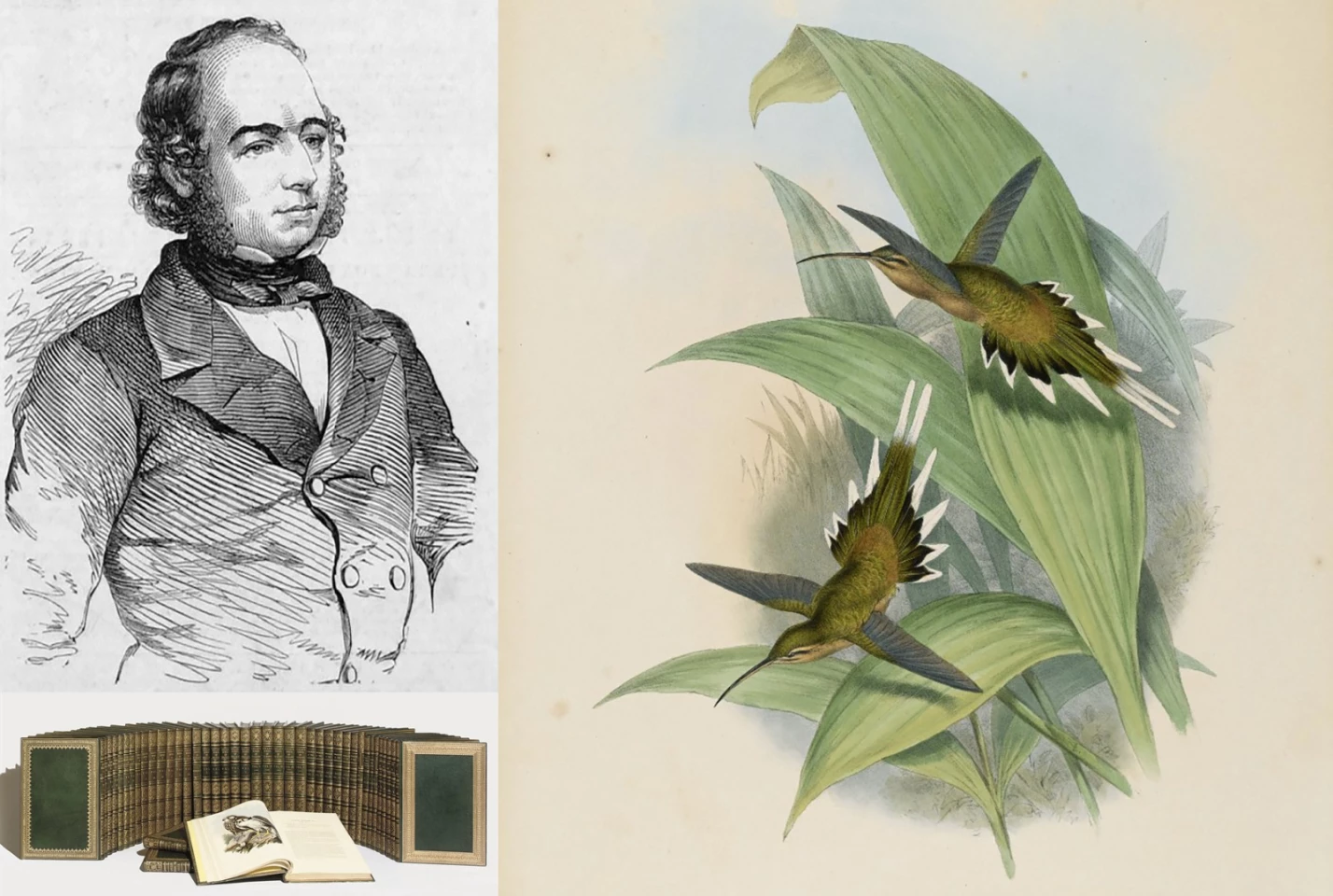
Price: $2,405,942 (£1,212,500)
Created: This is nearly a complete set of the entire published works of John Gould (1804-1881), being nine ornithological works in 40 volumes, almost all of them first editions, published between 1831 and 1888, and formed by Gould's friend, George Savile Foljambe (1800-1869).
Auctioneer: Christie's (London), April, 2008
Significance: With the death in 1851 of John James Audubon, John Gould (1804 – 1881) became the most important and celebrated ornithologist of the 19th-century, highly respected by fellow naturalists, a Fellow of the Linnean Society and Vice-President of the Zoological Society. In 1843 he was elected Fellow of the Royal Society for his contribution to Australian zoology. Gould first worked as "Curator [of Birds] and Preserver" at the Zoological Society of London, where he mounted a collection of bird specimens from the Himalayas. Believing it to be the first sizeable collection of Himalayan birds available in Europe, Gould decided to reproduce it in lithographic plates and with a descriptive text by N.A. Vigors, Secretary of the Zoological Society. Gould's wife Elizabeth made watercolors after his rough sketches, and drew the outlines on the lithographic stones. This husband-wife partnership was to continue, with artistic contributions from Edward Lear and Henry Constantine Richter, until her early death in 1841, after which Gould worked with Richter as artist. Gould produced ten bird books and Mammals of Australia; the publication of his last work, The Birds of New Guinea was completed in 1888 after his death.
12 – Hortus Eystettensis by Basilius Besler
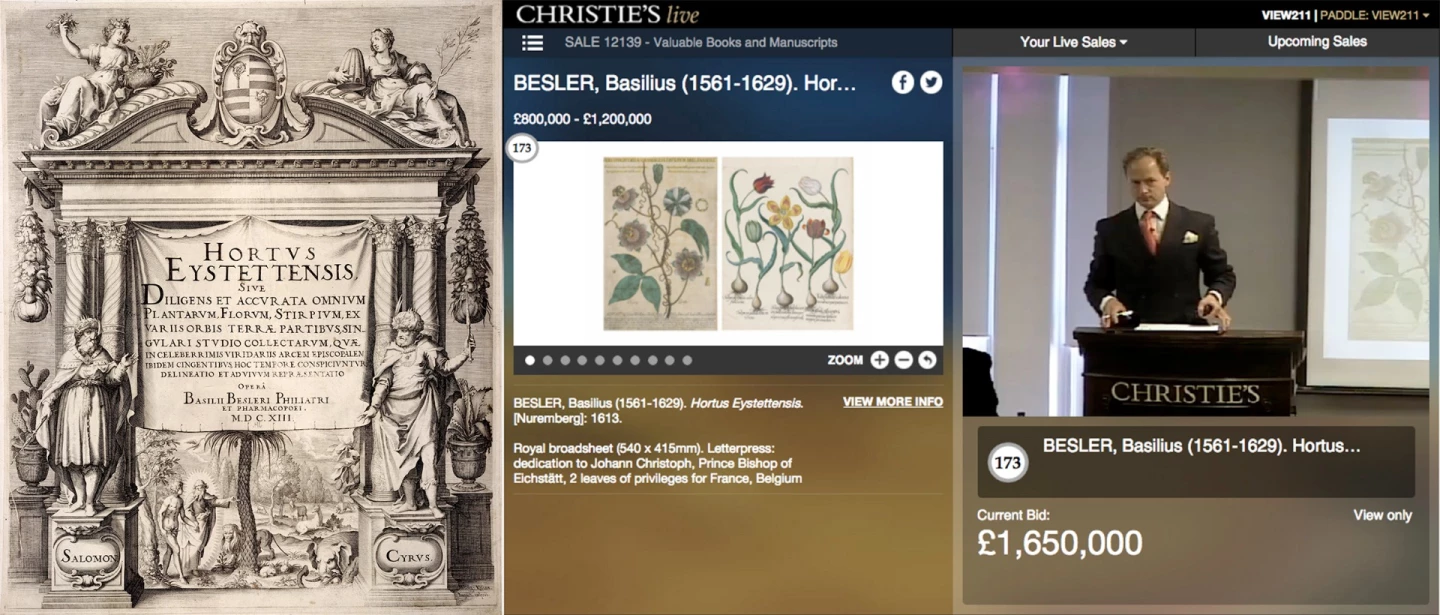
Price: $2,550,247 (£1,930,500)
Created: 1613
Auctioned: Christies (London), July, 2016
Significance: One of just 15 complete copies of the "most famous flower book in the world", this copy of the 400 year-old Hortus Eystettensis (Garden of Eichstätt) by Basilius Besler attracted considerable interest from around the globe in 2016 when it went to auction in London.
The book was a newly discovered copy of what the auction description termed "the most celebrated florilegium ever published, and what a find it was, being a deluxe colored copy of the first edition still in its original binding.
Besler's Hortus Eystettensis is a codex of the garden of Johann Konrad von Gemmingen, the bishop of Eichstätt in Bavaria. Commissioned by the Bishop, it was compiled over sixteen years, and involving dozens of skilled craftsmen. There's a lot written about this book, but in essence,Hortus Eystettensis changed botanical art overnight.
The emphasis in botanical works of previous centuries had been on medicinal and culinary herbs, usually poorly depicted and inadequate for identification, much less for any aesthetic qualities. The illustrations in Hortus Eystettensis covered over 1000 species from garden flowers, herbs and vegetables, through exotic plants such as castor-oil and arum lilies, all large and in rich detail. Two versions of Hortus Eystettensis were published: a black and white edition costing 35 florins, and a luxury version without text, printed on quality paper and lavishly hand-coloured, costing 500 florins. Wikipedia records that Besler purchased a comfortable home in a fashionable part of Nürnberg at a price of 2,500 florins with the profits. Such was the wherewithall required to own a book 400 years ago – one fifth the price of a luxury home. It may seem like a small print run these days, but just 300 copies were produced of the first edition and they took four years to sell.
Some perspective on the price: Hortus Eystettensis was already the second most valuable flower book in history with a copy having sold for £993,750 ($1,413,619) at a Christies London auction in November, 2001 so it was no surprise to see it fetch considerably more than the estimate of £800,000 to £1,200,000 (US$1.2 to $1.6 million). When the hammer fell, the final all up price took the book to £1,930,500 ($2,550,247) and a place just outside the top 10 scientific books of all time.
Items that have sold for a similar price at auction include the "Reach out to Asia" Fender Stratocaster guitar which fetched $2.7 million at a charity auction in Dohar in 2005, John Lennon's 1965 Rolls-Royce Phantom V ($2,534,628), the original typewritten scroll of Jack Kerouac's beat generation classic On the Road ($2,426,000) and John Lennon's Gibson J-160E guitar which was used to write "She Loves You", "I Want to Hold Your Hand" and "All My Loving" ($2,410,000).
11 – The Atlas of Admiral Giovanni Andrea Doria

Price: $2,561,246 (£1,464,000)
Created: 1570
Auctioned: Sotheby's (London), October, 2005
Significance: Sotheby's catalogue description encapsulates the importance of this set of books and maps: The Doria Atlas is one of the most important surviving records of Italian map publishing from the dawn of modern cartography, an outstanding example of an early composite atlas, containing not only some of the rarest printed maps from the so-called "Lafreri school" of Italian mapmakers active from the 1540s to 1570s, and as such one of the finest examples of the type in private hands, but also preserving an important suite of scarce Italian broadsheet maps from the 1620s, supplemented with a number of equally significant manuscript maps reflecting the commercial and military interests and activities of the members of this influential family. This "Atlas", which is really two quite separate atlases brought together in the late 1620s, is believed to have been originally compiled for Admiral Giovanni Andrea Doria, circa 1570.
Some perspective on the price: The Doria Atlas was purchased by Lord Wardington for £240,000 in 1988 - an astonishing price for a book at that time. Wardington was an avid collector of early maps and atlases, with his collection containing over 700 atlases and 60,000 maps, including works from Ptolemy, Gerardus Mercator and Abraham Ortelius, though when the collection was finally sold, it was this Doria Atlas which fetched the highest price. The entire collection, including this priceless (maybe not quite literally, but it should be) set, survived a major fire at Wardington Manor in Oxfordshire in April 2004 thanks to the local villagers forming a human chain to rescue the library's contents. The £1,464,000 auction price was paid by London-based rare book dealer Bernard Shapero.














